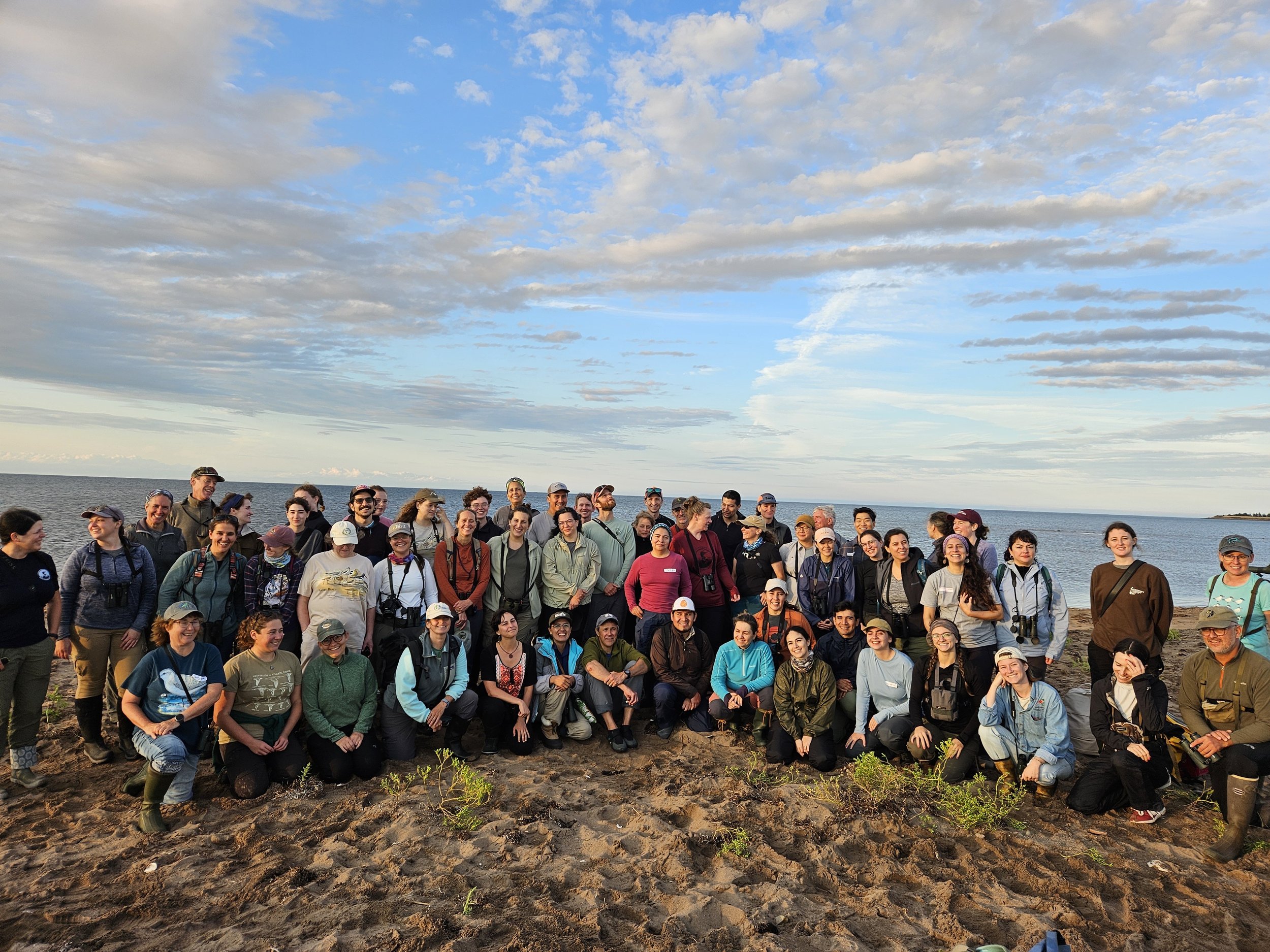DWB scholarships help shape the future of bird conservation
This past August, scholarships from DWB allowed three female early-career bird conservation biologists to attend the 10th Western Hemisphere Shorebird Group (WHSG) meeting at Mount Alison University in Sackville, New Brunswick, Canada: Norah Bruce, an undergraduate at the University of Mississippi (UM); Emma Counce, who recently earned her Master of Science degree at UM; and Oyenike Oyejide, a native of Nigeria who is just beginning graduate school at UM. Oyenike attended virtually, and Norah and Emma attended in person, accompanied by DWB President, Jason Hoeksema.
Jason, Norah, and Emma at the Northumberland Strait, where the field session of a pre-conference workshop on shorebird banding was held
Before the conference, Jason, Norah, and Emma participated in a workshop on shorebird banding. Run by WHSG shorebird banding experts, the workshop was designed to bolster the skills and knowledge of all participants, preparing them to capture and tag shorebirds more effectively and safely for scientific studies. Their improved skills, including capture methods, tagging methods and technologies, and making measurements on captured birds, will increase the effectiveness of DWB’s Delta Shorebird Tracking Project during upcoming field seasons.
More than 60 participants, representing many nations across the Western Hemisphere, took part in the WHSG’s pre-conference workshop on shorebird banding in August of 2024. Here, the group poses with the Northumberland Strait in the background, where the field component of the workshop took place. Our new connections and friendships with many of these participants will facilitate DWB’s mission to conserve migratory shorebirds.
The WHSG has now met 10 times since its founding in 2006, with the mission of connecting biologists and conservationists studying migratory shorebirds across the Western Hemisphere. The need for this connection now seems obvious: Migratory shorebird populations have been declining for decades, and the problem is complex, with challenges in their arctic breeding grounds, their Southern Hemisphere non-breeding sites, and at numerous migratory stopover sites in between. Communication across these migratory routes is thus essential for science and conservation efforts, and the WHSG is making a huge difference in this regard.
The scientific part of the meeting took place over four days, and involved oral and poster presentations by participants on diverse aspects of shorebird science and conservation. Norah presented a poster reporting data on usage in fall, 2023 of flooded crop fields in the Mississippi Delta by Lesser Yellowlegs and other shorebirds, under a DWB farmer incentive program funded by a State Wildlife Grant from the State of Alaska. Norah and Emma collected the data reported in the poster, and Norah analyzed the data with Jason’s guidance.
Emma presented the results of her Master’s research, which showed substantial usage by migratory shorebirds of flooded crop fields in both fall and winter, including higher winter usage of fields that had also been flooded in fall.
Field trips allowed our team to enjoy stunning views of murmurating flocks of Semipalmated Sandpipers at one of the most famous shorebird stopover sites in the Hemisphere, the Bay of Fundy.
We may not know the full impact of this opportunity on Norah, Emma, and Oyenike’s careers, but it is likely to be substantial. Emma said: “This Canadian adventure was so rejuvenating and grounding for me in many ways: My first time traveling internationally, my first scientific conference, …[and] getting to meet others who work along the migratory routes of the same birds we hope to help in Mississippi and Louisiana. To me the major theme of the week was connectivity, of birds, landscapes, and people. The warmth of the people I met this week has given me a new and sweeter outlook on conservation biology in general, and has given me many new friends across the hemisphere with the same passions as me. As always, I am in awe of these delicate and mighty little birds and so fortunate to get to spend my time and energy working with them.”
Our team posing with Shep the Giant Shorebird, a local New Brunswick mascot for the 10’s of 1000’s of migratory shorebirds that stop there each year.
Norah said: “The 10th Western Shorebird Group Meeting was an amazing experience. As I wade through classes like Calculus 2, this meeting helped me remember the career and life I’m chasing. We met so many amazing and interesting shorebird biologists during the pre-conference workshop and during the actual meeting. The sense of community and acceptance was overwhelming in the best way. I enjoyed listening to the variety of research and projects taking place across the Western Hemisphere. It was a reminder that successful conservation is an effort of many across a wide variety of locations and backgrounds. I learned so much and will remember the trip for a very long time. I’m incredibly thankful that I was able to attend.”
Norah and Emma's attendance of the WHSG meeting was made possible by donations to Delta Wind Birds. To support DWB's conservation, science, and educational mission, please visit our Donation page (link).







